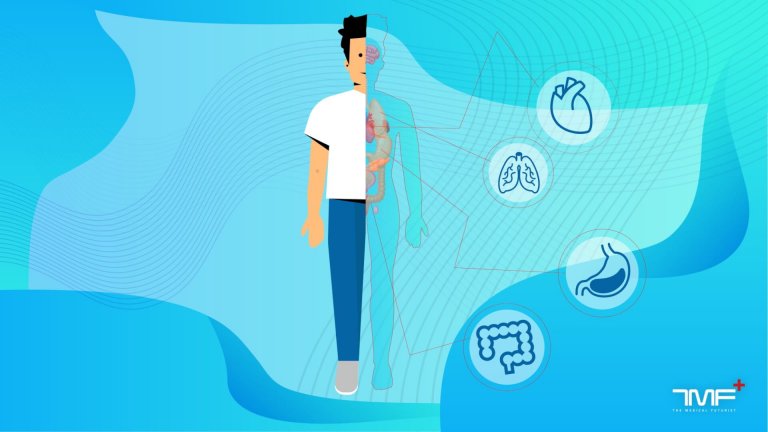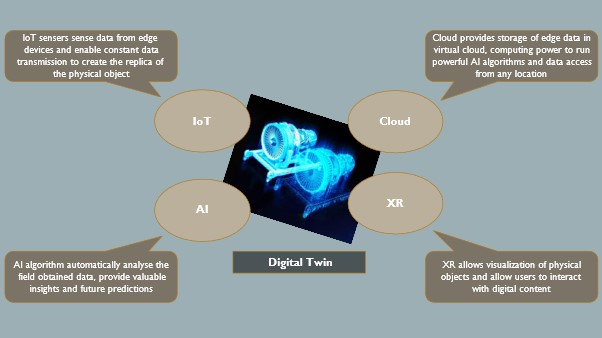Digital twins have emerged as a powerful technology in various industries, including healthcare. In its simplest form, a digital twin can be defined as a virtual model of a physical object. However, it goes beyond just a 3D representation and incorporates dynamic interactions and behaviors that mimic the real-world counterpart. This article explores the concept of digital twins in healthcare and their potential applications in predicting and improving health outcomes.
Understanding Digital Twins in Healthcare
A digital twin in healthcare is a virtual replica that encompasses all the components and their interactions of a real-life entity, such as a human organ or a population. Unlike a static 3D model, a digital twin must emulate the dynamic behavior, responses, and functions of the object it represents. Natalia Trayanova, a professor at Johns Hopkins University, explains that a digital twin incorporates the geometry of the entity along with its components’ interactions.
Digital twins in healthcare are valuable tools that enable better prediction of physiological and sociological behaviors. By leveraging advanced technologies like artificial intelligence (AI) and machine learning (ML), digital twins can help healthcare professionals gain insights into complex systems and make more informed decisions.
Personalized Digital Twins for Clinical Decision-Making

One area where digital twins are making significant strides is in clinical decision-making. Researchers at Johns Hopkins University, led by Natalia Trayanova, are applying personalized digital twin approaches to improve predictive diagnostics and treatment plans for patients.
Trayanova’s team focuses on treating patients with heart rhythm disorders. By creating a personalized digital twin that represents the geometry and electrical wave propagation of a patient’s heart, they can accurately simulate the behavior of the organ. This allows them to predict and diagnose arrhythmias, a common heart rhythm disorder.
The digital twin incorporates the structure of the heart, including any disease remodeling identified through medical imaging techniques like MRI or PET scans. By sending electrical signals and observing how the waves propagate through the model, Trayanova’s team can predict the likelihood of an arrhythmia occurring in a patient.
Moreover, the digital twin helps physicians plan and optimize treatments for patients. For instance, catheter ablation, a common treatment for arrhythmias, requires precise targeting of damaged tissues. With the insights provided by the digital twin, physicians can identify the areas that need to be treated, improving the success rate of the procedure.
Trayanova’s research has paved the way for the integration of digital twins in cardiology. It was the first digital twin in cardiology to be approved by the Food and Drug Administration (FDA) and used in a randomized clinical trial.
Using Digital Twins to Improve Health Equity
Digital twins can also play a crucial role in addressing health disparities and improving health equity. Cleveland Clinic is leading a project that aims to understand how patients’ neighborhoods influence their health outcomes. By creating digital twins of neighborhoods, the healthcare organization can analyze the impact of various factors on population health.
Jarrod Dalton, the director of the Center for Populations Health Research at Cleveland Clinic, explains that the project’s goal is to inform population health planning initiatives in advance. By understanding the disparities in life expectancy based on location, healthcare systems can develop targeted interventions to improve health outcomes in specific communities.
To construct the digital twins, Cleveland Clinic combines data from electronic health records with information on environmental characteristics and socioeconomic factors. By modeling the neighborhood environments and residents’ experiences, the digital twins provide a holistic view of the impact of these factors on health.
:max_bytes(150000):strip_icc()/GettyImages-957609906-dcf4dbdc220d49c5b309a7f18d82adfe.jpg)
The project currently focuses on neighborhoods near Cleveland Clinic’s campuses in Florida and northeastern Ohio. However, the infrastructure and approach developed can be scaled and applied to any community, making it a valuable tool for addressing health disparities on a broader scale.
Advancements and Future Applications
The field of digital twins in healthcare is rapidly evolving, with ongoing advancements and future applications being explored. Researchers and developers are working towards improving the efficiency, scalability, and portability of digital twin technology.
At Johns Hopkins University, Trayanova’s team is continuously working to speed up the process of creating a digital twin of a patient’s heart. Their goal is to make it more portable and scalable, requiring innovative engineering solutions. Additionally, they are enhancing the visualization capabilities of the program to provide more comprehensive insights.
Artificial intelligence (AI) and machine learning (ML) are expected to play a significant role in the future of digital twin technology in healthcare. By integrating AI into the digital twin construction process, researchers can enhance the accuracy and efficiency of creating virtual replicas.
Cleveland Clinic’s digital twin neighborhood project could potentially be integrated with digital twin cities, such as the one representing Singapore. This integration would allow for a more comprehensive understanding of the factors influencing population health and enable more effective planning and decision-making.
The Potential of Digital Twins in Healthcare
Digital twins have the potential to revolutionize healthcare by offering personalized and predictive insights into complex systems. They can aid in the diagnosis and treatment of various medical conditions, especially in fields like cardiology. By accurately simulating the behavior of organs and populations, digital twins enable healthcare professionals to make more informed decisions and develop targeted interventions.
As the technology continues to evolve, the healthcare industry can expect to see advancements in efficiency, scalability, and integration. Digital twins have the power to transform the way medical products are designed, tested, and manufactured. With their ability to simulate and predict outcomes, digital twins can help drive innovation and improve health outcomes for individuals and communities alike.
In conclusion, digital twins are emerging as a powerful tool in healthcare. By creating virtual replicas that mimic the behavior of real-life entities, such as organs or populations, healthcare professionals can gain valuable insights and make informed decisions. The applications of digital twins in healthcare are vast, ranging from personalized diagnostics to addressing health disparities. As technology advances, digital twins have the potential to revolutionize the healthcare industry and improve health outcomes for individuals and communities.
